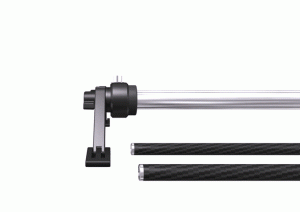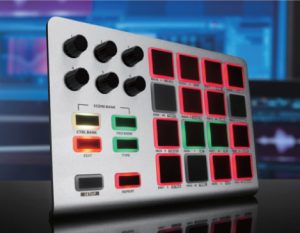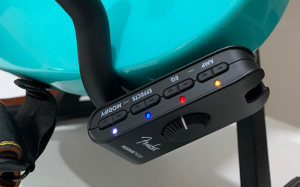Those of us who shoot with sliders regularly understand how quickly that equipment gets expensive. Pro-level sliders without motion control easily make their way into four-digit territory, and adding motorized motion control can add another stack of cash to the deal. Rhino’s Slider EVO and Rhino Motion controller are gunning to change that.
So what makes the slider awesome?
Well, to start, the interchangeable rod manual slider is ready to use right out of the box. It incorporates a brake, and adjustable feet for less-than-smooth surfaces. Simply mount and go. Adding the motion controller doesn’t change things much – the motor is clipped to one end of the slider, and the magnetic controller unit plugs into the motor. With those magnets the controller can be stuck to the motor as well.
With a simple UI, an easy to read display and a large dial, the Rhino Motion unit is friendly out of the gates. The interface allows users to select different modes, say for video or time lapse shooting. Controllable variables include distance, duration, and in or out speed settings for “ramp” shots.
Recently tested by the folks at Engadget, they had great things to say about the flexibility and durability of the slider combo. In their words: “Perhaps the features that interest me most, are the ones I likely actually need the least. Example: you can accessorize the Evo with a “parallax” mount that will rotate the camera on an axis as it slides, or skip the motor completely, and use an optional “inertia” wheel for judder-free slides that require no power at all. This is a great compromise for me, as I love the power-free convenience of a manual slide, but the smoothness that the wheel provides. Battery life isn’t too much of a concern though, in an afternoon of testing, (and plenty of slides) there was still well over 50-percent remaining. If, like me, you don’t really need the extras, the basic kit has everything you’ll need, plus easily updatable firmware means new features could come at a later date. You can also make the slider longer just by slotting in more poles. There’s a lot of flexibility here.
I’ve been toying with the idea of getting a motorized slider pretty much since I first tried a manual one. I just love the smooth results that a motor provides, and I’m a sucker for moving time lapses. If your camera is compatible, Rhino’s controller can trigger your shutter, too, which is especially handy for night time lapses, as it only takes a picture when it’s not moving (so avoids blurring).”
Already fully funded on Kickstarter, the Rhino Slider EVO starts at $399 for the standard 24″ slider and goes as high as $599 for a carbon fiber 42″ model. The slider/controller combo starts at a cool grand for 24″ and goes as high as $1,149 for a 42″ carbon fiber model. All models are set to ship beginning in August.







Leave a comment